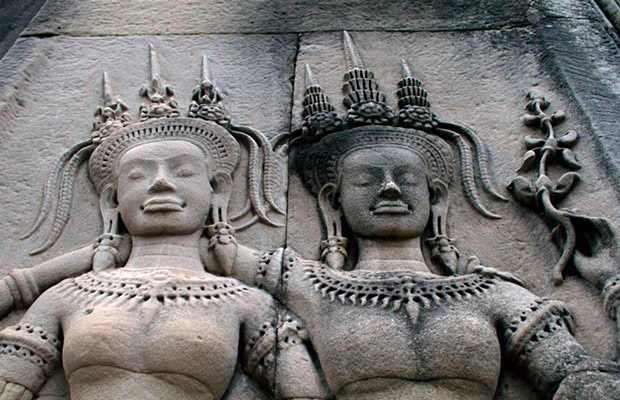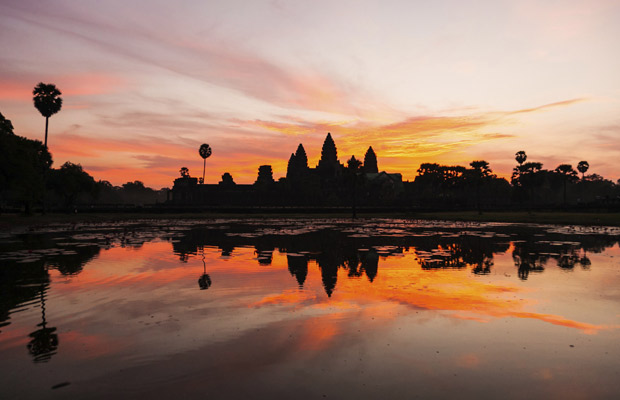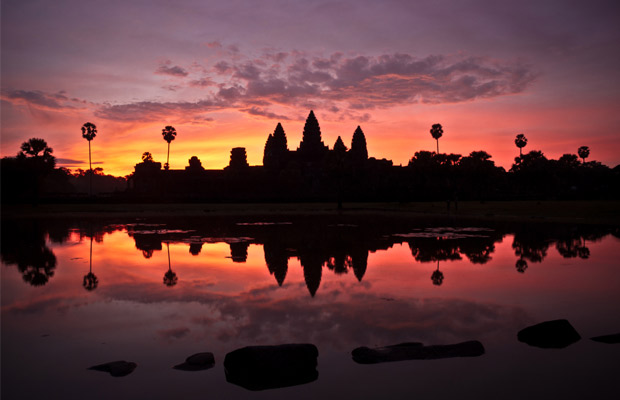Sambor Prei Kuk
Sambor Prei Kuk (Khmer: ប្រាសាទសំបូរព្រៃគុក, Prasat Sambor Prei Kuk) is an archaeological site in Cambodia, located in the province of Kampong Thom, 30 km north of Kampong Thom, the provincial capital, 176 km east of Angkor and 206 km (128 mi) north of Phnom Penh. The now ruined complex dates back to the pre-Angkorian Chenla Kingdom (late 6th to 9th century) established by King Isanavarman I as sanctuary and central capital, then known as Isanapura. [1] [2] In 2017, Sambor Prei Kuk was declared a UNESCO World Heritage Site.
Sambor Prei Kuk (Khmer: ប្រាសាទសំបូរព្រៃគុក, Prasat Sambor Prei Kuk) is an archaeological site in Cambodia, located in the province of Kampong Thom, 30 km north of Kampong Thom, the provincial capital, 176 km east of Angkor and 206 km (128 mi) north of Phnom Penh. The now ruined complex dates back to the pre-Angkorian Chenla Kingdom (late 6th to 9th century) established by King Isanavarman I as sanctuary and central capital, then known as Isanapura. [1] [2] In 2017, Sambor Prei Kuk was declared a UNESCO World Heritage Site.
Located on the eastern shore of Lake Tonle Sap, near the Sen river, the central part of Sambor Prei Kuk is divided into three main groups. Each group has a square layout surrounded by a brick wall. The structures of the global archaeological area were constructed at varying times: the southern and northern groups (7th century) by Isanavarman I, considered a possible founder of the city [4] and the central group (later date).
The buildings of Sambor Prei Kuk are characteristic of the pre-Angorian period with a simple external plane. The main material is brick, but sandstone is also used for certain structures. [5] Architectural features include numerous prasats, octagonal towers, shiva lingams and yonis, ponds and reservoirs and lion sculptures. Sambor Prei Kuk is located amidst mature sub-tropical forests with limited underground vegetation. The area has been mined and may still contain unexploded ordnance.
History
7th century
Isanavarman, I restarted the kingdom of Chenla between 616 and 637 AD, taking Isanapura as its capital [10] and argues that he built the main temple Prasat Sambor (Group N), as there is an inscription on the site attributed to his reign and dated September 13, 627 AD. [11] The king is also known for sending his first embassy to the court of the Sui Dynasty in China (616-617). Chenla conquered different principalities in northwestern Cambodia after the end of the period of the Chinese reign yǒnghuī (永徽) (ie after January 31, 656), which earlier (in 638/39) paid tribute to China.
The last major king in Isanapura was Jayavarman I, whose death caused turmoil to the kingdom in the early eighth century, breaking in many principalities and paving the way for a new era: Angkor. This site is also claimed as an initial capital of Jayavarman II (O'Reilly & Jacques, 1990).
20th century
Following the coup d'état of Lon Nol to Prince Norodom Sihanouk in 1970, US President Richard Nixon ordered a secret Cambodian bombing to fight against Khmer Rouge guerrillas and any influence of North Vietnam in the country. The US aircraft bombed positions inside the archaeological site, causing craters near the temples, while the guerrillas left several land mines that were cleared only in 2008.
This site was added to the UNESCO World Heritage List on January 1, 1992 in the Cultural category.
View Mores Temple Guide

Preah Palilay
Preah Palilay (Khmer: ប្រាសាទព្រះបាលិលេយ្យ [1]) is a temple in Angkor, Cambodia. It is located in Angkor Thom, 400 m north-west of Phimeanakas. This small ...

Ta Som
Ta Som is a small temple in Angkor, Cambodia, built at the end of the 12th century for King Jayavarman VII. It is located northeast of Angkor Thom and east of Neak Pean. The King dedicated the temple ...

Terrace of the Elephants
The Elephant Terrace (Khmer: ព្រះ លានជល់ដំរី) is part of the walled city of Angkor Thom, a ruined temple complex in Cambodia. The terrace was used by Angkor King, ...
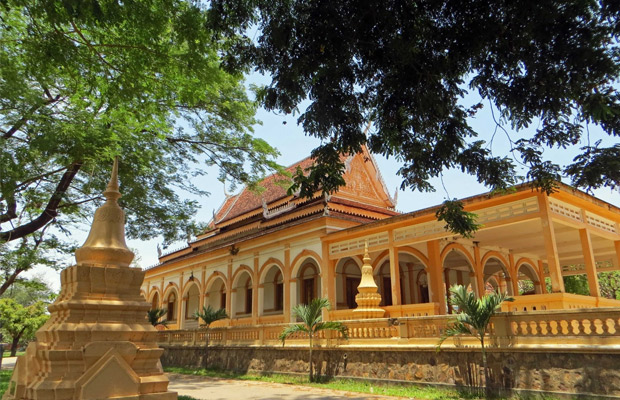
Wat Damnak
Wat Damnak is located near Phsar Chas aka Old Market, just opposite the Siem Reap River. If you were to stroll the Old Market, you would see the stone bridge directly in its southeast corner. Stroll ...
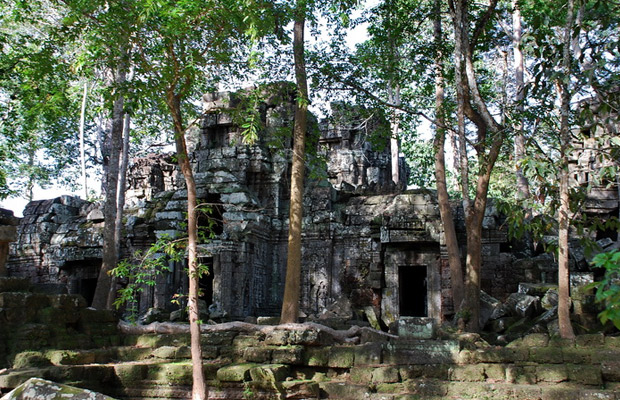
Ta Nei
Ta Nei is a 12th century stone temple located in Angkor, Cambodia. Built during the reign of King Jayavarman VII, it is located near the northwest corner of East Baray, a large sacred reservoir. It ...
.jpg)
Angkor Wat Temple
Since the "discovery" of the temple of Angkor Wat, released in the mid-19th century, it was described as the largest religious building in the world and is rightly spoken as one of the wonders of the ...

Prasat Wat Athvea
Wat Althea, also called Prasat Vat Althea, is a 12th century Hindu temple in Angkor, Cambodia, with an active Buddhist temple and burial ground, located next to the ancient walled structure. It is ...

Prasat Thom
The main monument in Koh Ker is Prasat Thom. The stairway to the top is open to a limited number of visitors and the views are spectacular if you can stretch the heights. About 40 entries, dated from ...

Banteay Kdei Temple
Extensive monastic complex, largely unrefurbished, in the same style as Ta Prohm. It was originally built on the site of an earlier temple, and functioned as a Buddhist monastery under Jayavarman ...
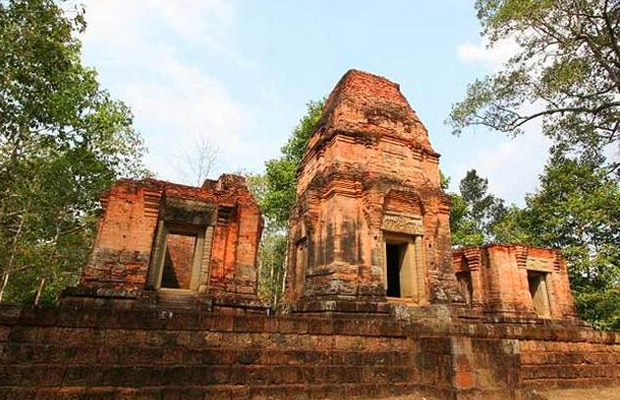
Prasat Bei
Prasat Bei (Khmer: ប្រាសាទបី) means "three temples", is a temple with three brick towers in a north-south row, facing east and standing on a laterite platform. The central tower ...

Prasat Chrung
Prasat Chrung (Khmer: ប្រាសាទ ជ្រុង) are temples that are located in every corner of Angkor Thom, in the landfill that comes almost to the top of the walls, is a small temple ...
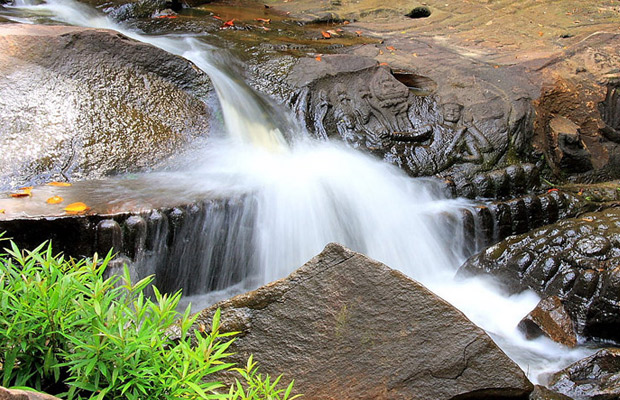
Kbal Spean
Kbal Spean is an archaeological site of the Angkorian era on the southwest slopes of the Kulen Hills, northeast of Angkor, in the Siem Reap district of Siem Reap province, Cambodia. It is situated ...




